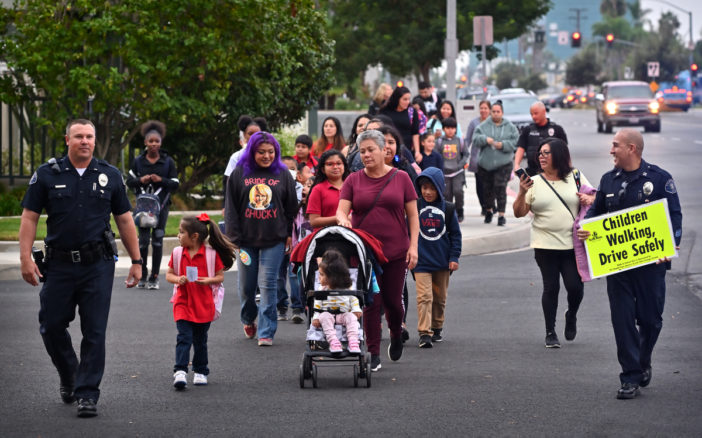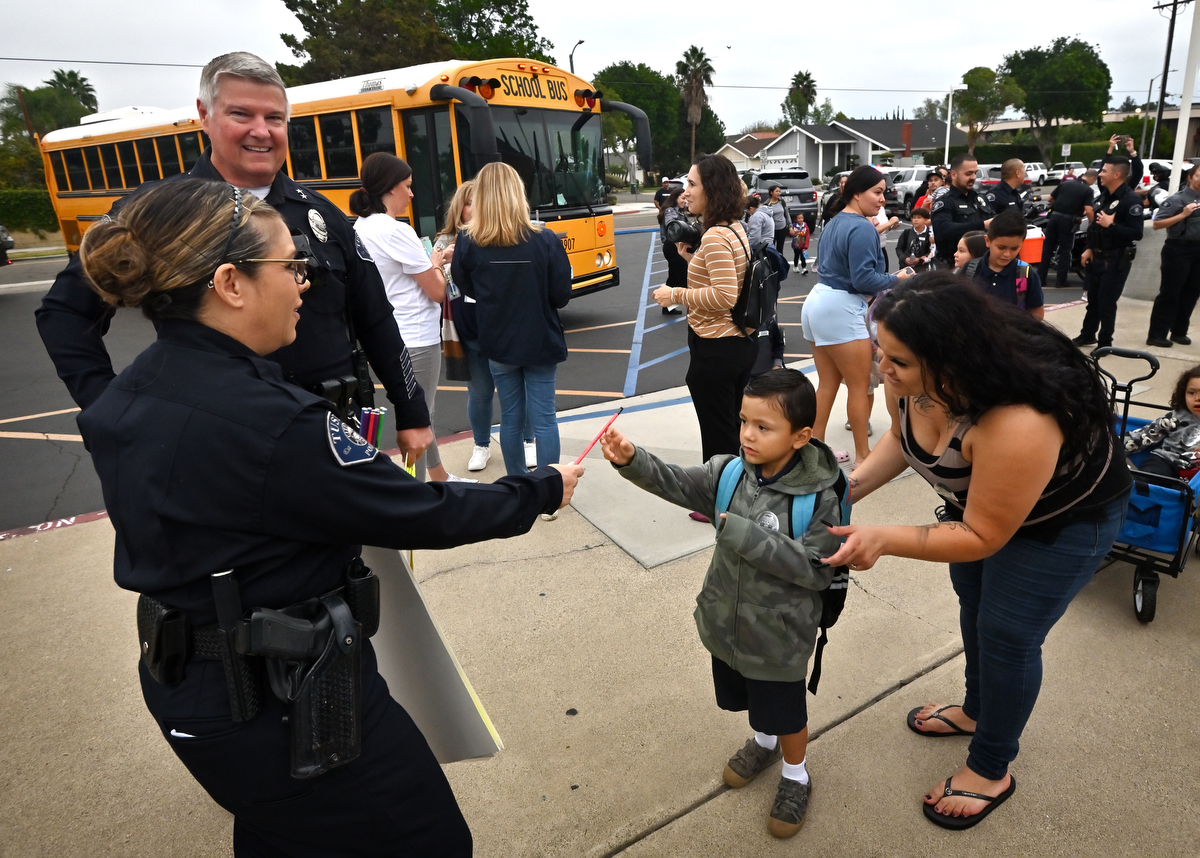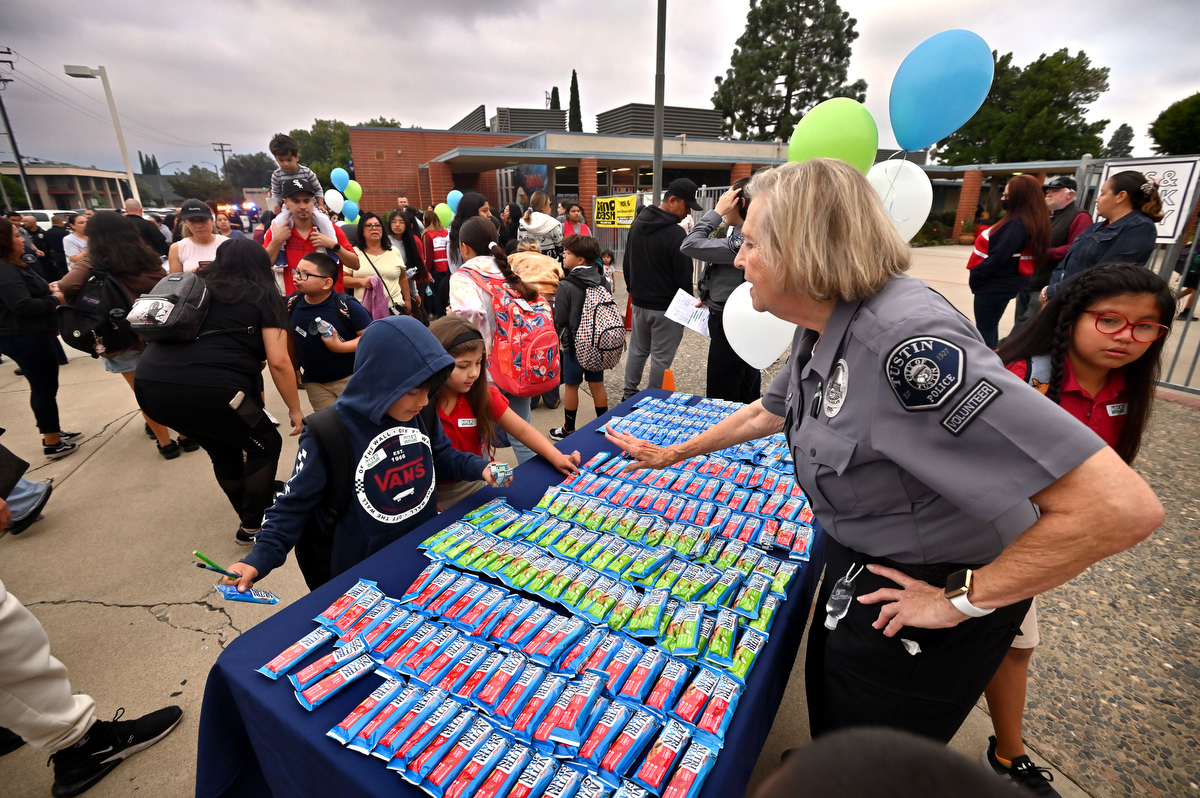Despite thunder, overnight rain, and the threat of showers, over 150 students, parents, and family members hit the pavement on Oct. 12 to participate in the national Walk to School Day in Tustin.
Gathering at Pacific and First streets and several junctures along the route, a growing crowd, with a police escort, made the trek to Helen Estock Elementary School.
“It’s a nice turnout. It’s always good to see that,” said Tustin Police Department Deputy Chief Bob Wright, who led a contingent of walkers from Peppertree Park to the school. “We love these positive events. It’s great to see the smiles on everyone’s faces. That’s what makes it all worthwhile.”
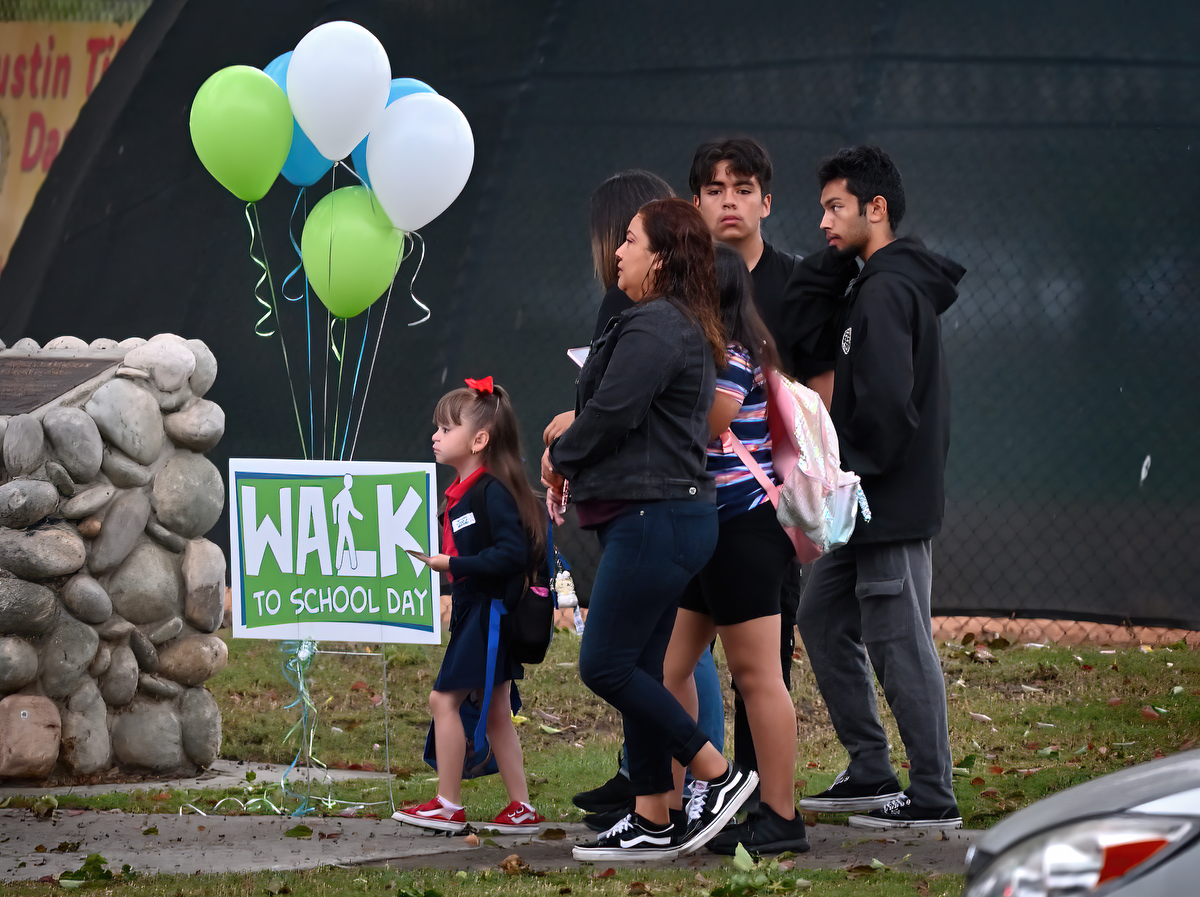
Kids and their parents walk down First Street in Tustin on their way to Estock Elementary during National Walk to School Day.
Photo by Steven Georges/Behind the Badge
The popular event rotates annually through the city’s elementary schools, usually alternating between schools in the North and South Patrol Divisions. Last year, the walk resumed for the first time since being interrupted by the COVID-19 pandemic.
After the walkers arrived, representing about a third of the school population, an assembly was held with a demonstration by Tustin Motor unit. The police department donated sports equipment to the school and prizes went to the classrooms with the largest number of walking participants.
This year Connie Yee’s transitional kindergarten class won the grand prize, an in-class dessert party hosted by the Police Department’s Community Resource Unit, featuring treats donated by Yogurtland. Principal Amanda Heineman said she was delighted by “the excitement and energy” of the students. She also praised the Tustin PD for being a great partner.
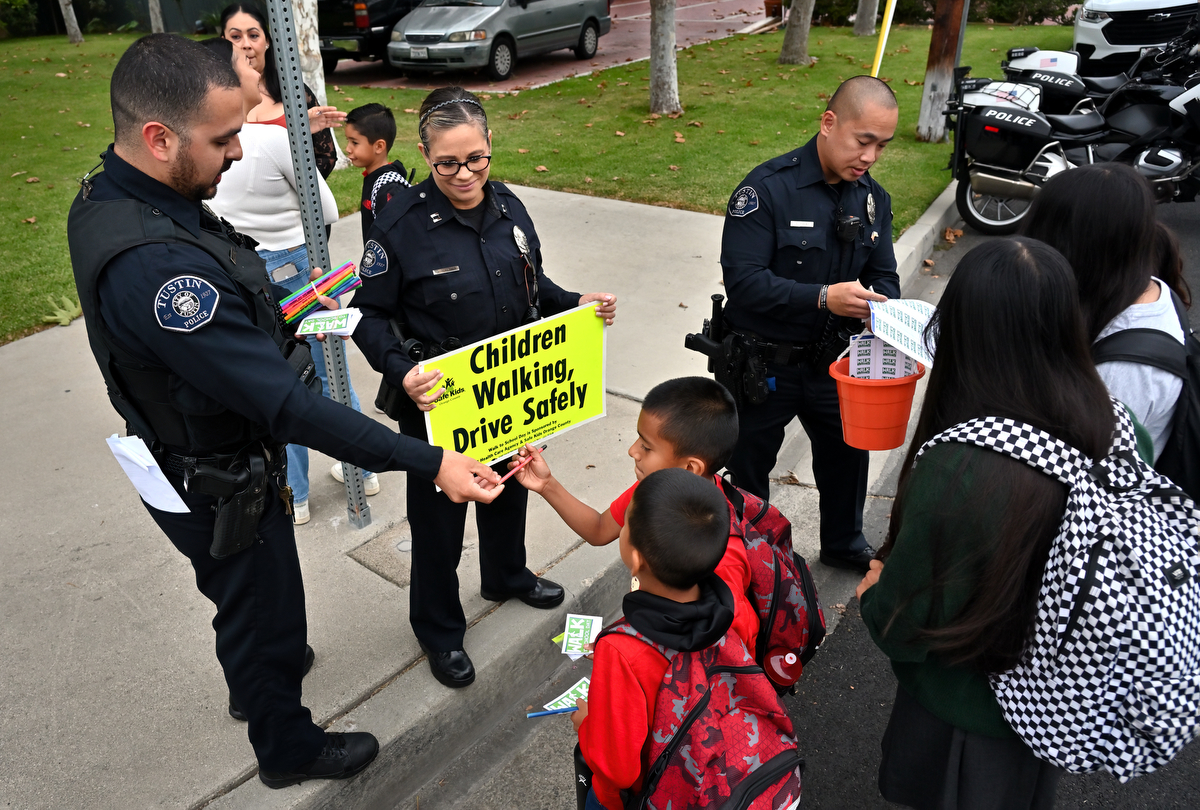
Tustin Police Officer Eduardo Diaz, left, Capt. Stephanie Nichols, and Officer Tim Thai greet kids as they arrive at the start of their National Walk to School Day with the Tustin Police Department.
Photo by Steven Georges/Behind the Badge
Early arrivers
At about 7:15 a.m., only 15 minutes before the walk was scheduled to begin, the corner of Pacific and First Streets was empty but for a handful of police officers gathered next to an 11-by-14 placard with balloons advertising the walk.
Third grader Daniel Moreno, 9, and his father, Ramon Moreno, were the first to arrive.
“This is the first time we’ve done this,” Ramon said.
“We usually drive,” Daniel added.
“It’s good for them,” Ramon said of walking. “It’s motivation.”
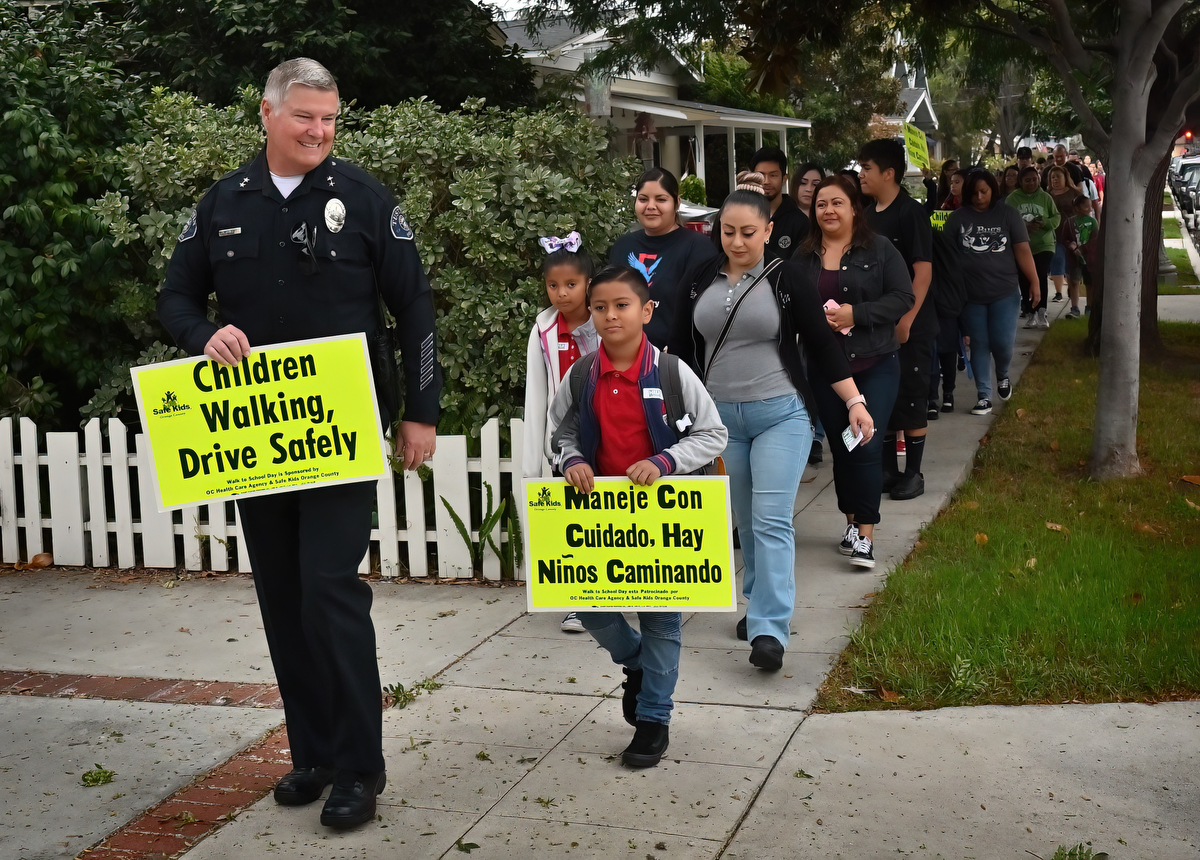
Tustin Police Deputy Chief Robert Wright leads a group of kids and their parents as they walk down B Street in Tustin on their way to Estock Elementary during National Walk to School Day.
Photo by Steven Georges/Behind the Badge
The crowd grew to about 30 by the time the walk began. Tustin police officers and Community Relations team members handed out pencils, badges, and assorted swag to the students. At the school, water and cereal bars were available for participants.
“Look, I’m a cop now,” said first grader Brianna Diaz, displaying a stick-on police badge handed out by the officers. “Can I drive that?” she asked a motor officer about his motorcycle.
“We like to participate whenever (the school has) an event,” said Maria Diaz, Brianna’s mother.
A tradition
The national Walk Our Children to School Day was launched in 1997 and is now in its 26th year. The event has since been expanded to 40 countries as well as all 50 states.
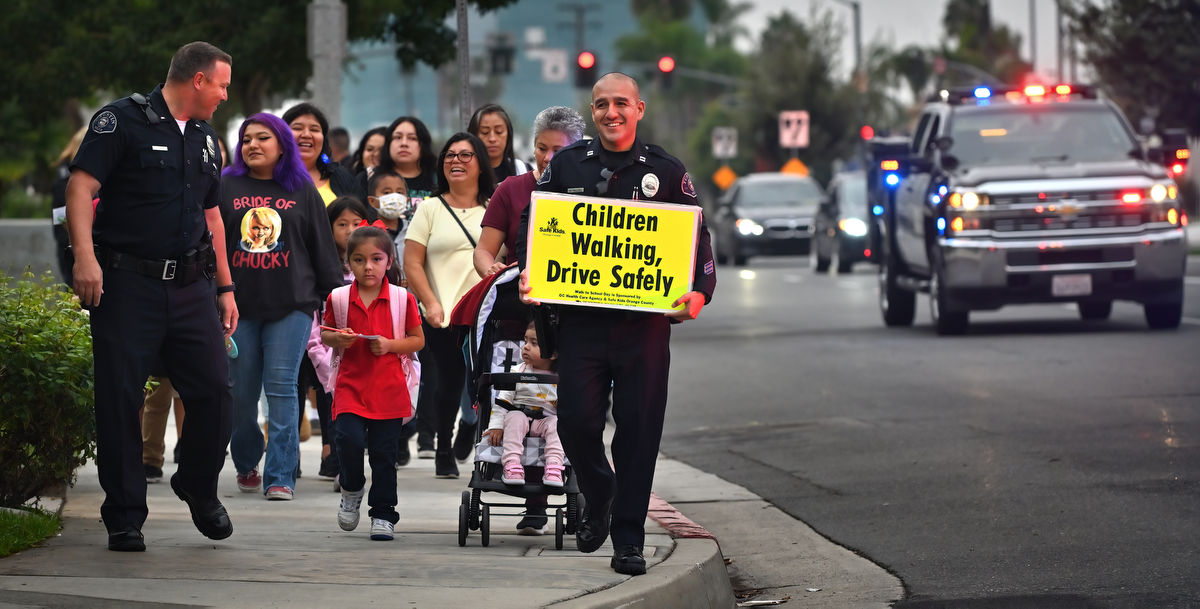
Tustin Police Lt. Ryan Coe, left, and Capt. Manny Arzate, right, escort kids and their parents to Estock Elementary with the help of a couple of Tustin police patrol cars as they walk down First Street during National Walk to School Day.
Photo by Steven Georges/Behind the Badge
Each year, police, safety personnel, and volunteers use the event to talk to students about safe commuting practices, such as obeying traffic signs, signals, and crossing guards. The students also learn about the importance of helmets and awareness of their surroundings. Last year, the event was revived in Tustin at Benjamin Beswick Elementary.
The National Center for Safe Routes to School, which launched the events, posts information on walkbiketoschool.org. According to the site, 2,505 events, including 264 in California and 20 in Orange County, registered with the group. However, many more organizations and schools, including those in Tustin, participated informally.
Estimates of children who walk to school vary widely, but experts agree walking and biking to school has plummeted. Many of the participants in the Oct. 12 walk said they generally drive to school.
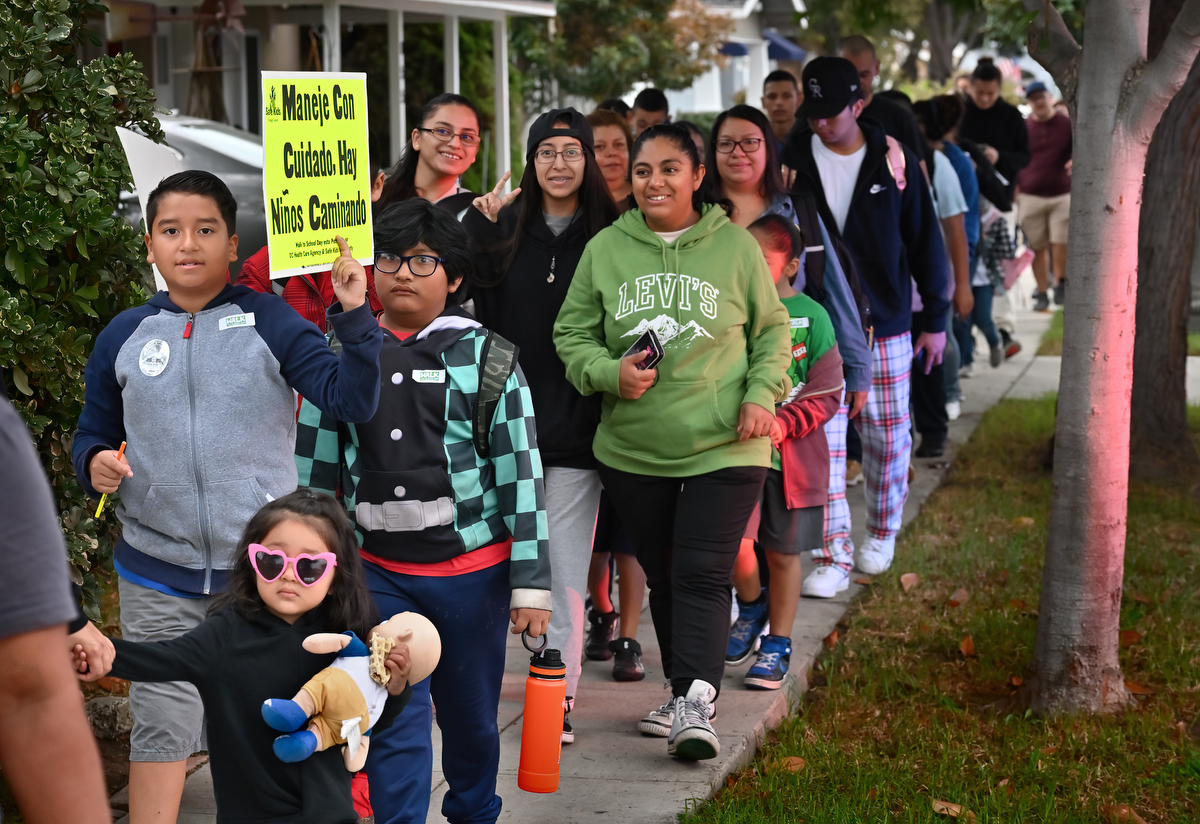
Kids and their parents walk down B Street in Tustin on their way to Estock Elementary during National Walk to School Day.
Photo by Steven Georges/Behind the Badge
A survey by the National Center for Safe Routes to School found that between 1969 and 2009, the percent of students in grades K through 8th who walk to school fell from 48 percent to 13 percent.
Maria Diaz said many students live far from the school and a number of residents from her neighborhood carpooled to the walking route to participate.
According to research by the University of Toronto, walking to school has numerous benefits, such as higher academic performance, attention and alertness, and lower stress levels. Walkers also have improved fitness and lower weight.
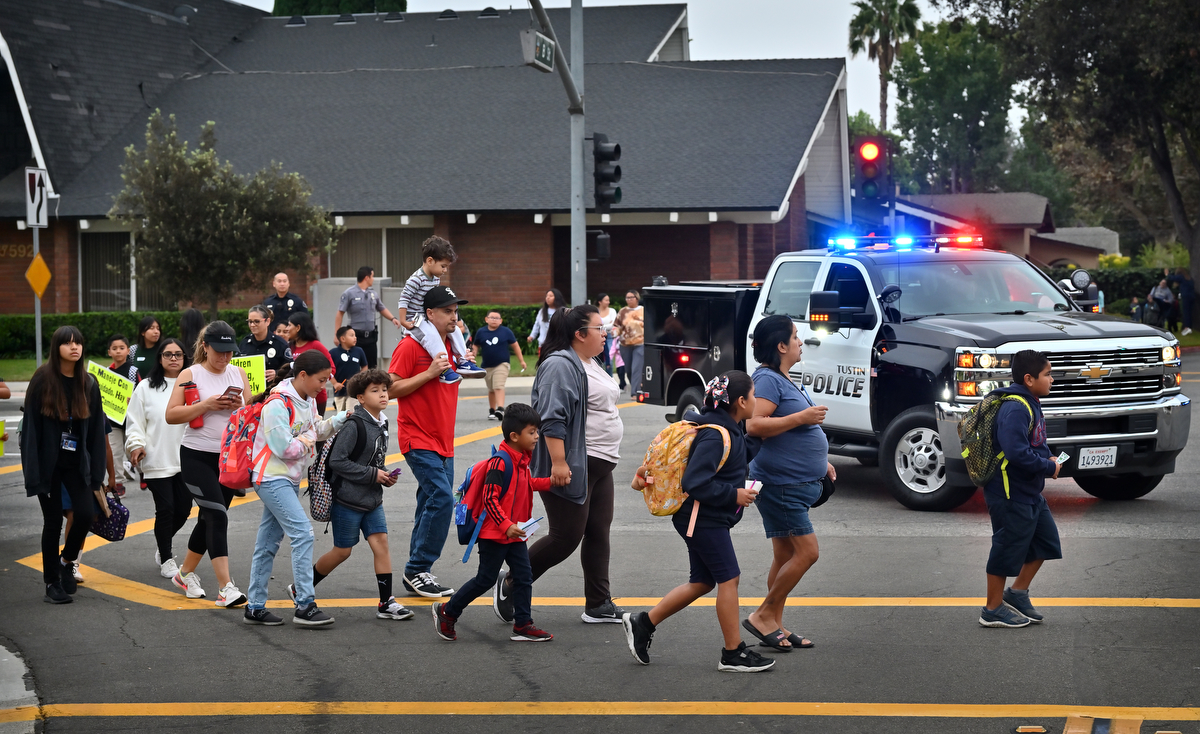
Students walk past a Tustin police truck ensuring the safety of the kids, on the corner of Irvine Boulevard and B Street as they near Estock Elementary during National Walk to School Day.
Photo by Steven Georges/Behind the Badge
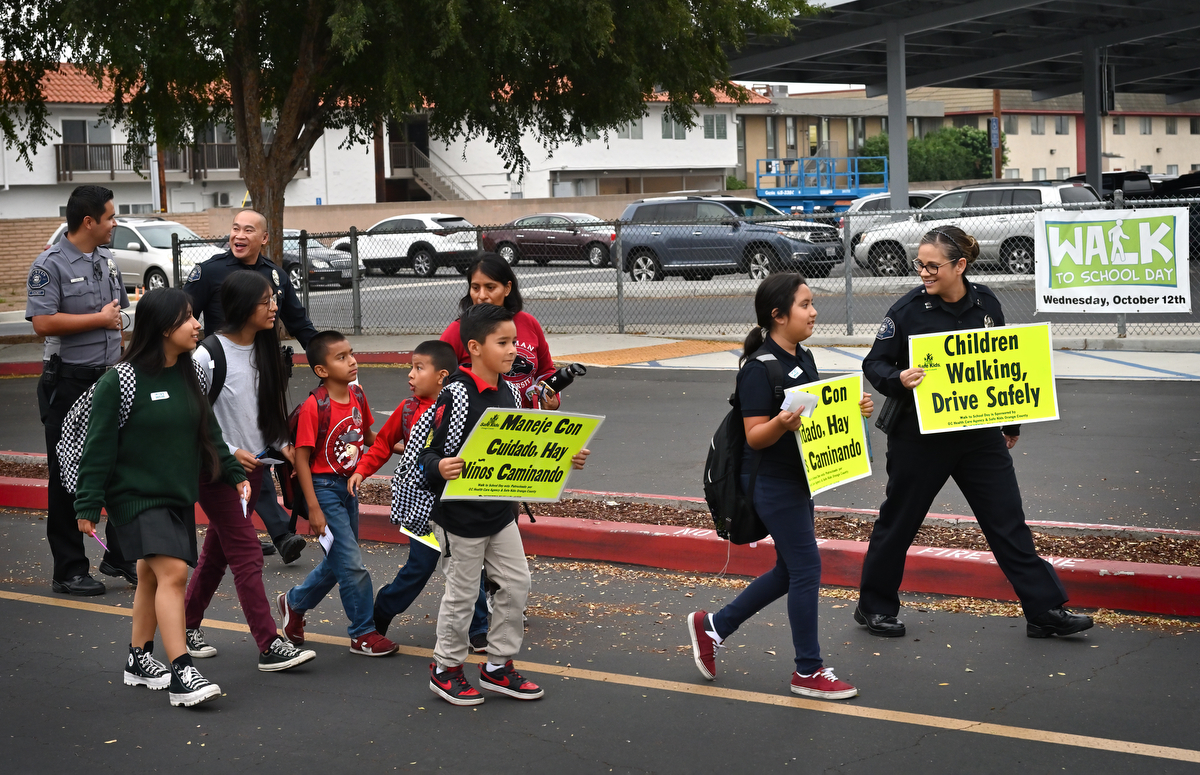
Tustin Police Capt. Stephanie Nichols, right, walks with students to school at Estock Elementary in Tustin.
Photo by Steven Georges/Behind the Badge

Tustin Police Det. Eric Haug kneels down to hand out police sticker badges to Estock Elementary students with PSO Briana Landgraf after the kids walked to school with the Tustin Police Department.
Photo by Steven Georges/Behind the Badge
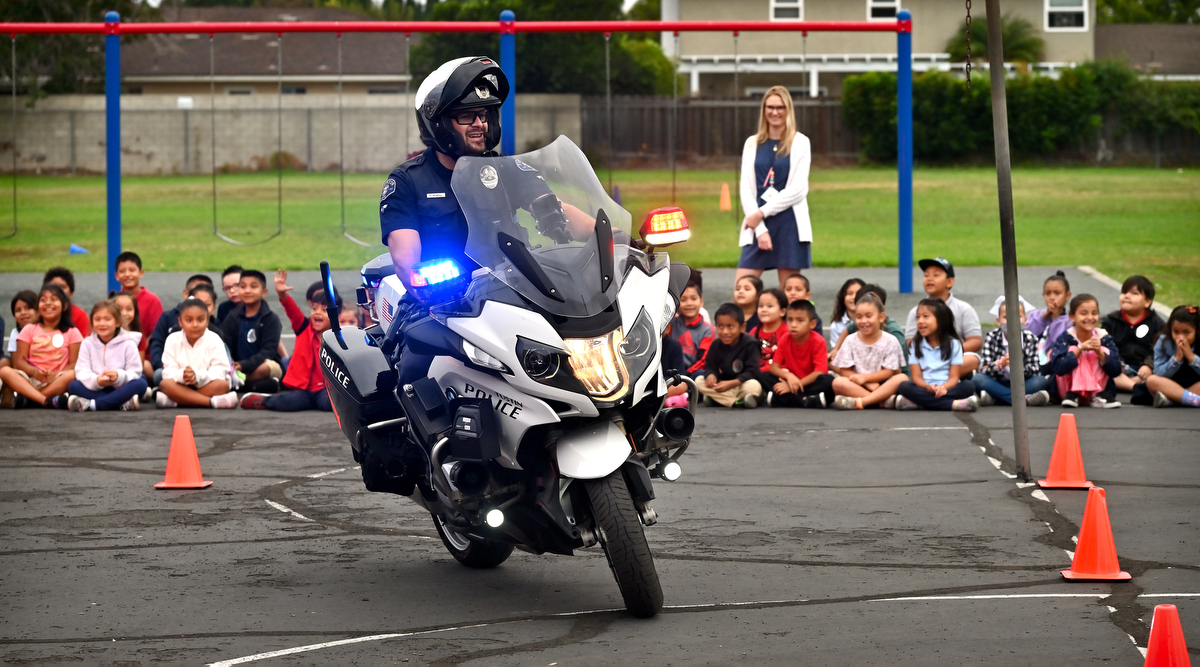
Tustin Police Motor Officer Ryan Newell rides at Estock Elementary during an assembly at the school.
Photo by Steven Georges/Behind the Badge
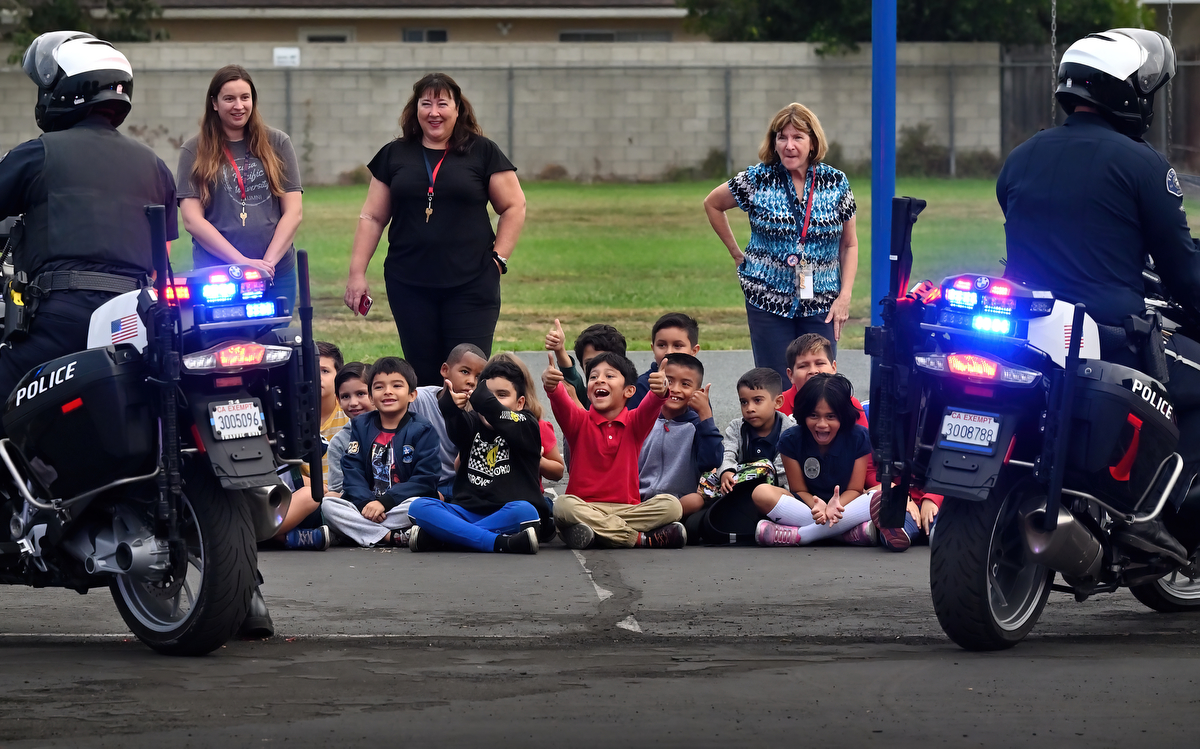
Estock Elementary kids get excited as Tustin motor officers give a demonstration during an assembly at the school.
Photo by Steven Georges/Behind the Badge

Tustin motor officers give a demonstration to kids at Estock Elementary during an assembly at the school.
Photo by Steven Georges/Behind the Badge

Tustin Police Motor Officer Josh Yuhas introduces his fellow motor officers before they perform a demonstration for Estock Elementary students.
Photo by Steven Georges/Behind the Badge
 Behind the Badge
Behind the Badge
